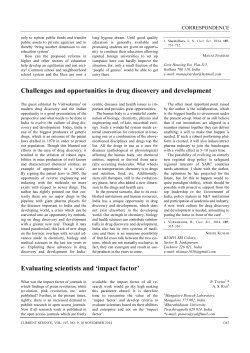
Document 387046
“Better be unborn than untaught, for ignorance is the root of misfortune.” Practice Bloom in your class room. Remembering Make a list of elements you know Understanding From a periodic table match these elements with their symbols and note down Applying Make a photocopy of blank PT(in the manual) and start filling it using different colours Analyzing Separate the blocks and class(metal, metalloid and non metal) in your P.T chart Evaluating Compare your P.T with your friends and investigate the differences. Creating Organize your P.T with electronic configuration. Make some lyrics using symbol to learn first twenty elements. Also devise a class room P.T with your group by making flash cards. Learning Objectives Evaluating Analyzing • Investigate the history of the elements & P.T by making its time-line and pie-charts • Compare the periodic laws , formats and conventions as a persuasive presentation Creating • Construct the conceptual map. Devise your own Periodic Table using blank handout / flash cards. Instructional Strategies Guide at a side Topic: Periodic Table 21st Century Approach: Giving direction, Brain storming & Intervening skills .Activity based Class discussion 21st. CENTURY Skills: Critical and logical learning, Self direction, Analyzing and probing in to bring individual judgment, Conceptual learning , speaking and writing command MODE / TECHNIQUE:: Handouts, Quiz, conceptual Map, power point presentation, flash cards, making own copy of P.T My Action Plan Goals Short Term • To create an environment for the participants that enable them to think, analyze and make their own judgment. • To add in new strategies of teaching . • To emphasize more on conceptual learning. Long Term • Chemistry teachers of DHA Institutions excel in cognitive approach and critical thinking • Sharing of knowledge and subject discussion so that The knowledge dimensions be more enhanced. Challenge Solution This is the most challenging task as all the participants are Chemistry teachers who are teaching this topic in their respective classes for many years. The best solution is to utilize the techniques like D2L, JIT and Concept Mapping along with Intel Get Started. SOME OF THE ACTIVITIES INVOLVED IN CRITICAL THINKING Interpreting according to a framework Relating theory to practice Making a claim and supporting it Using appropriate evidence Making links between ideas Asking questions Evaluating Predicting Describing Analysing Synthesising Categorising Establishing cause and effect Comparing and contrasting Identifying problems and solutions When Creativity hybridizes excellence & methodology in science & technology resultant yield is Chemistry. THE CENTRAL SCIENCE. Seema Khan Timeline Introduction & Conclusion 4 Min. Quiz & QA Action Plan 5 Min 3Min Presentation 25 Min Learning Objectives 3 Min Resources Windows 7 Intel Teach Program Getting Started Manual. Multimedia projector. Sound system. Chalk n board if other resources are not available. Handouts. References www.wikipedia.com www.chemgenesis.com www.google.com www.yahoo.com www.chemistry.com Inorganic Chemistry & Advance Inorganic Chemistry by Satya Parkash, G.D Tuli, S.K Basu, R.D Madan. Inorganic Chemistry by Zafar Iqbal (Punjab text book board) www.acs.com www.iupac.com
© Copyright 2025





















